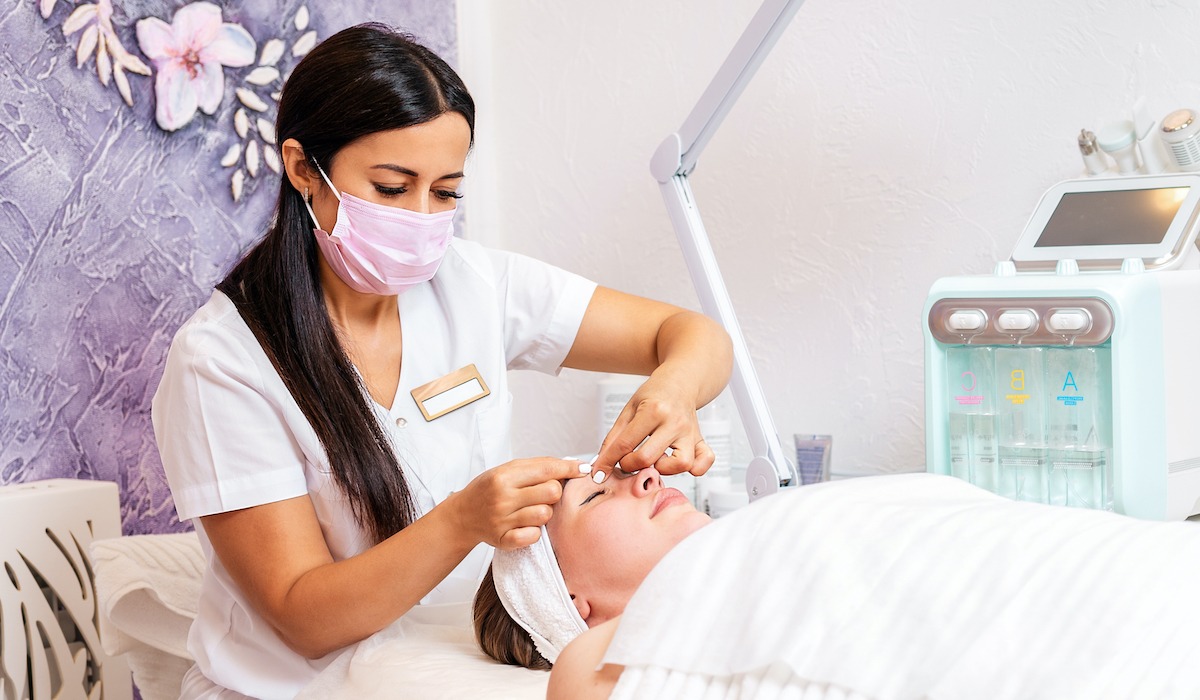Here are 10 easy safety tips to think about when you evaluate the security of your salon and spa precautions.
1. Spa Design
The style of your salon or spa is not just about creating a luxurious and relaxing environment for your staff and clients It has to be designed and constructed with security in mind.
If you’re an owner of a salon or spa or employee or consultant, these are the most crucial things to look for in the area or room for treatment.
Proper ventilation of the Occupational Safety and Health Administration or OSHA has important guidelines for ventilation in the nail service rooms, or areas, as well as the formaldehydes used for hair care, however adequate ventilation is essential to your health as a practitioner and the customer.
2. Ergonomics
The space should be comfortable for technician so that they don’t strain the body, hands, and back.
Tables and stools for facial use:
Make adjustments to the height of the face table If you can, raise the height of the face table.
While setting-up, be sure to place the stool on the table’s facial for the proper height and positioning to perform services.
The technician’s feet must be level on the floor. Their hands should be lower than the level of their chests.
Set up the supply cart or counter so close to the face table as is possible.
3. Disinfection vs. Sterilization
Disinfection is the process of treating an area to eliminate pathogenic microorganisms. Sterilization is the process which eliminates all living microorganisms.
A disinfectant that is registered with the EPA must be used in each cleaning room to disinfect equipment and tools. All equipment must be thoroughly cleaned prior to being put in the disinfectant solution. It is important to remember the fact that an ultraviolet (UV) disinfectant doesn’t disinfect equipment and is used only to store.
4. Disinfecting Equipment and the Treatment Room
Guidelines for proper sanitation, cleaning, and disinfection are required to be posted in different locations of the salon or spa.
Make sure you follow a specific procedures in every room. clean and disinfect after every usage using the following method employing a state-regulated disinfectant or 70 percent isopropyl-alcohol solution. Change the high-level disinfectant solution inside the container in accordance with manufacturer’s instructions.
5. Gloves and Hand Washing
OSHA recommends that gloves be worn whenever there is a good chance that the hands will come into contact with mucous, blood, or unintact or damaged skin (such as acne lesions that are open) possible contaminated items or surfaces that are contaminated.
6. Disposal of Potentially Infected Material
OSHA regulates the proper disposal of all items that contains any bodily fluids or blood, as in sharp objects, such as lancets.
Be aware of your state’s laws, as some states prohibit the use of lancets during facials.
7. Use and Proper Cleaning of Autoclave for Sterilization
Autoclaves are sterilizers for tools that kills any microorganism, including bacteria, viruses, fungi and spores.
Autoclaves sterilize by supplying steam pressurized. Every reusable tool must be sterilized between treatments. If you don’t own an autoclave or sterilizer you shouldn’t use re-usable equipment.
Cleanliness and maintenance, as well as tests of your sterilizer is crucial to ensure that your sterilizer is properly sterilized and in compliance with the requirements of your state. Some states require every week test using state-approved substances.
8. Use Disposables
Utilizing disposable items is the most effective way to ensure hygiene. Single-use items are recyclable and are only used only once. The use of this supply is contingent on the location you work at and can comprise the following:
9. SDS Sheets
Safety Data Sheets, also known as SDS are documents that provide information for every product used in skin care whether professional or retail employed in salons, that include the name of the product and code of the product, ingredient list and the use for which they are relevant (cosmetic/skincare) as well as limitations on usage (for instance: for use on the skin care products as indicated on the label) and information about the manufacturer of the product as well as address. emergency contact details, for example the number of the manufacturer.
SDS sheets should be stored within a binder, or the computer in the treatment area for quick access should they be required. While the ingredients in skin care are relatively safe, the normal procedures require that these sheets contain information about the control of exposure chemical and physical properties such as stability and reactivity, disposal of toxicological, ecological, and other regulatory information as well as international.
10. Waxing Procedures
It is vital to maintain a clean, healthy skin while waxing. Skin is more prone to infection when waxing because hair is removed and the follicles are reopened.
While the wax pot has been heated and liquefied by an oven but the temperature isn’t sufficient to kill bacteria and germs. The proper temperature to kill the bacteria in all forms is at least 100 degrees Celsius or the temperature of 212°F, which is too hot to be applied to the surface without burning.
It is essential to maintain a clean surroundings and equipment federal law says that “everyone is unclean and service providers who are exposed or could be exposed are required to take measures to prevent cross-contamination.

